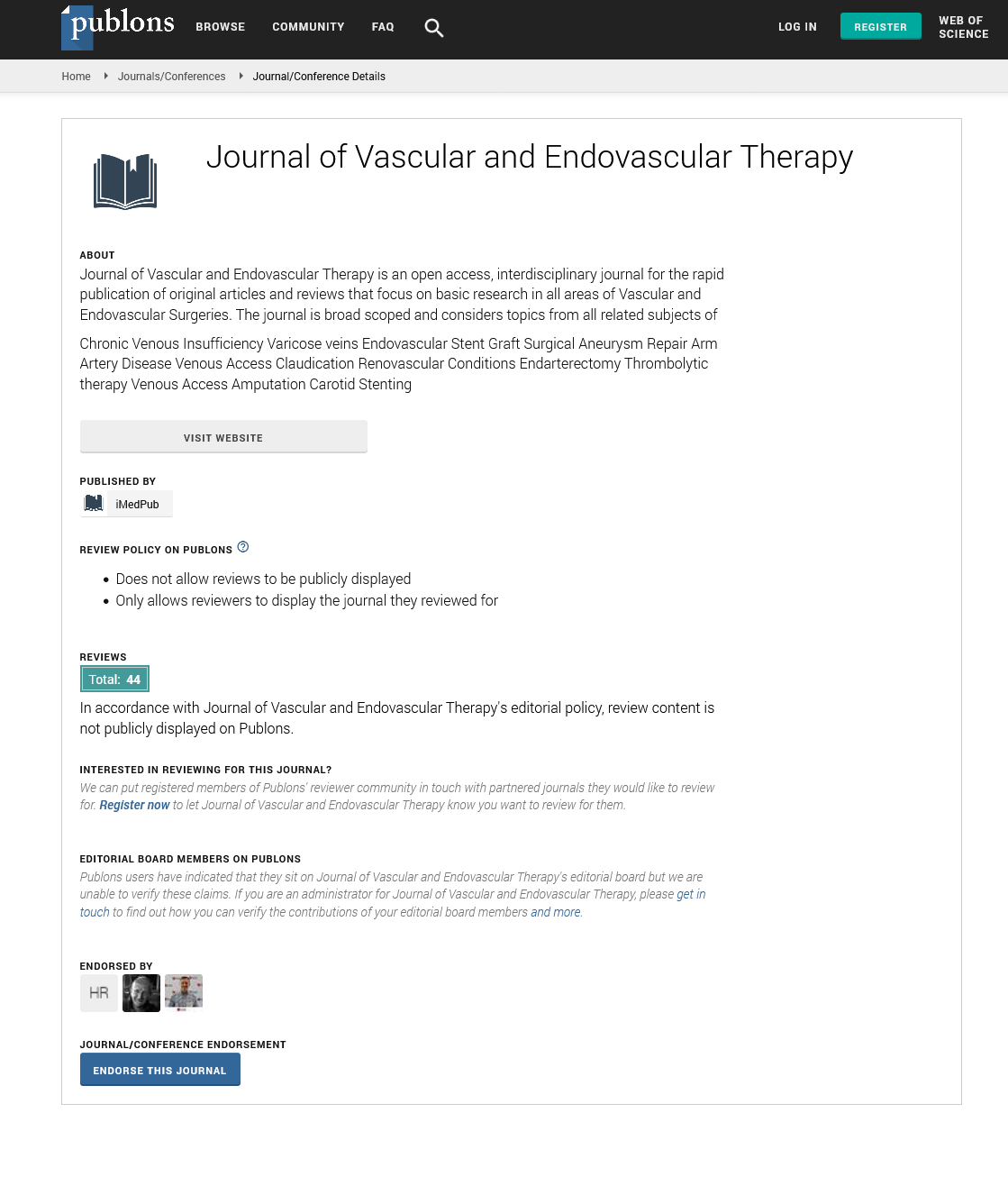Abstract
Surgical Treatment Strategies of Iatrogenic Giant Femoral Artery Pseudoaneurysms
Background: The aim of this study was to evaluate the technical and clinical results, following surgical treatment of iatrogenic giant femoral artery pseudoaneurysms.
Methods and findings: Among 1850 patients 60 (3.25%) of them diagnosed with an iatrogenic giant femoral artery pseudoaneurysms. All patients underwent surgical repair and were followed up for one month, three month and six month respectively using Duplex ultrasound sound and/or CT angiography. There were 40 male and 20 female, aged 30-70 years (Mean age 49.06 years ± 11.03). There were 66.7% n=40 patients presented with groin pain, pulsatile mass associated with lower extremity ischemia, infected pseudoaneurysm in 16.7% (n=10), pending ruptured pseudoaneurysm in 8.3% (n=5), and large wide pseudoaneurysm neck confirmed by Doppler ultrasound (8.3%) n=5. Primary repair was done for 30 patients; repair with vein batch angioplasty for 15 patients, interposition reversed saphenous vein graft for 10 patients, and interposition synthetic Dacron graft for 5 patients. Technical success was achieved in 100% of cases. There is neither limb loss nor intra-operative or postoperative mortality. Distal extremity ischemia was completely resolved after surgical repair. Postoperative complications included one groin wound infection, which was controlled by antibiotic treatment and debridement.
Conclusion: Open surgical repair of femoral pseudoaneurysms is technically feasible, first-line treatment for iatrogenic giant femoral artery pseudoaneurysmsassociated complications.
Author(s):
Ahmed Mousa, Abdul Rahman S Al-Mulhim, Ahmed Audeh, Bayan Al-Ghadeer and Faisal Al-Khaldi
Abstract | Full-Text | PDF
Share this

Google scholar citation report
Citations : 177
Journal of Vascular and Endovascular Therapy received 177 citations as per google scholar report
Journal of Vascular and Endovascular Therapy peer review process verified at publons
Abstracted/Indexed in
- Google Scholar
- Open J Gate
- Publons
- Geneva Foundation for Medical Education and Research
- Secret Search Engine Labs
Open Access Journals
- Aquaculture & Veterinary Science
- Chemistry & Chemical Sciences
- Clinical Sciences
- Engineering
- General Science
- Genetics & Molecular Biology
- Health Care & Nursing
- Immunology & Microbiology
- Materials Science
- Mathematics & Physics
- Medical Sciences
- Neurology & Psychiatry
- Oncology & Cancer Science
- Pharmaceutical Sciences


